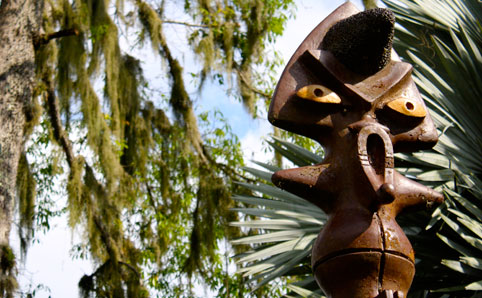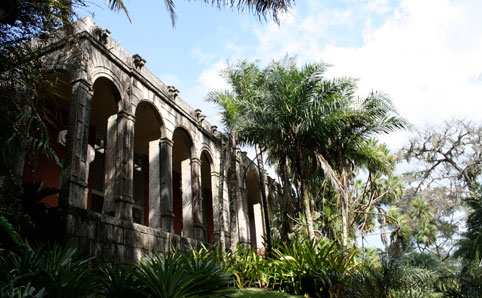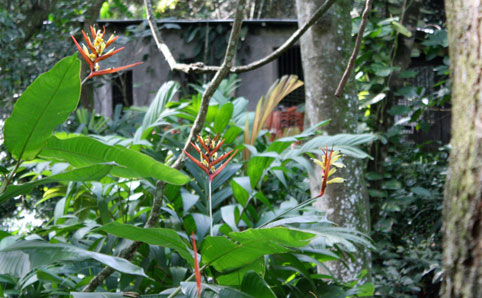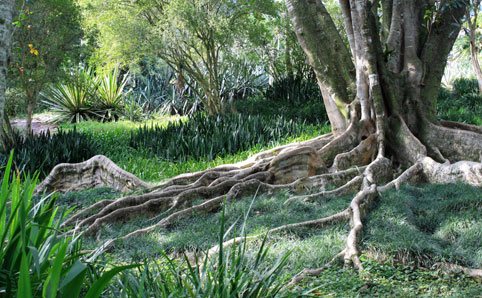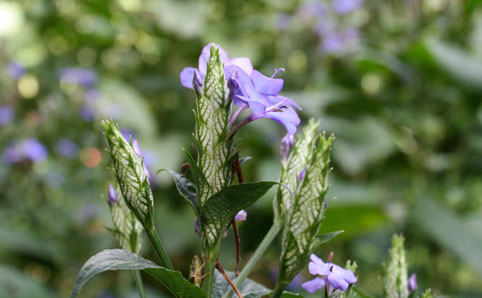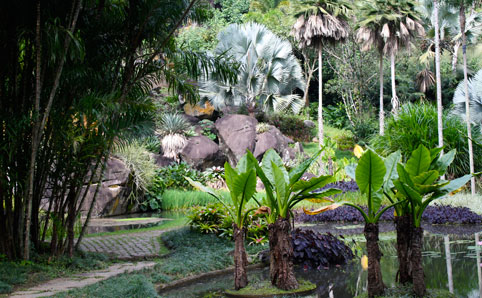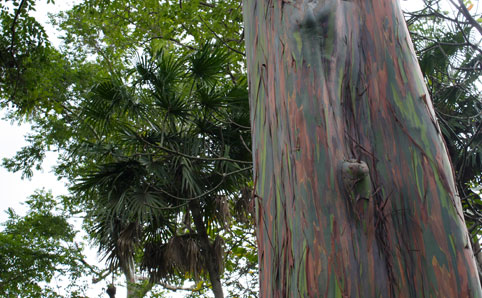Roberto Burle Marx may have passed away in 1994 on the cusp of his 85th birthday, but his legacy lives on in all its rich, green glory on the western edge of metropolitan Rio. The most influential landscape artist in Brazil’s history, Marx’s imprint can still be found on the wave-patterned tiles of the Copacabana promenade and the Aterro do Flamengo, the huge landfill project that created one of the most beautiful park spaces in the city, if not the country.
Today, the Sítio Roberto Burle Marx in Guaratiba, one hour west of Rio, is maintained as his personal legacy to the city. A former banana plantation he bought along with his brother in 1949, the grounds comprise 365,000 square metres of hillside, home to some 3,500 different species of plants all donated to the government, and therefore the people, while he was still living there.
A team of 18 gardeners now care for the intricately designed plant beds, where layers of greens are gradually built up to deliver an overall impression even more remarkable for the near-complete lack of flowers, a signature of his gardens to sidestep seasonal changes. All manner of bromelias, grasses and palms lead up to a main house, almost perfectly maintained just as it was left, complete with the owner’s glasses folded by the bed in the austere-looking bedroom, an incongruously large painting of Jesus on the wall of the atheist's private quarters.
In the main dining room, Marx held long dinner parties for the great and the good of the Rio art world (he was also quite the accomplished chef), with the music room very much the focus of the house. Two huge, wooden church doors provide the farthest entrance to the one-storey building, so large that a new floor had to be constructed to accommodate them, opening to reveal a vast collection of arte naïf models as well as several of his own paintings and sculptures.
Further up the hillside is Marx's former studio, now a gallery (currently undergoing a refurb) but still very much with the atmosphere of the workshop it once was. Recreated stone by stone from a building he coveted in Praça Mauá, the high, vaulted windows look out across the valley to the mangroves, and perched on the veranda sits a cast of the last sculpture he died before completing. Never married and without children, the man was a creative force, driven from his early interest in art towards botany by visits to the Berlin Botanical Gardens. Had that diversion of his interests never taken place, the Rio visual of today would be a very different prospect.

